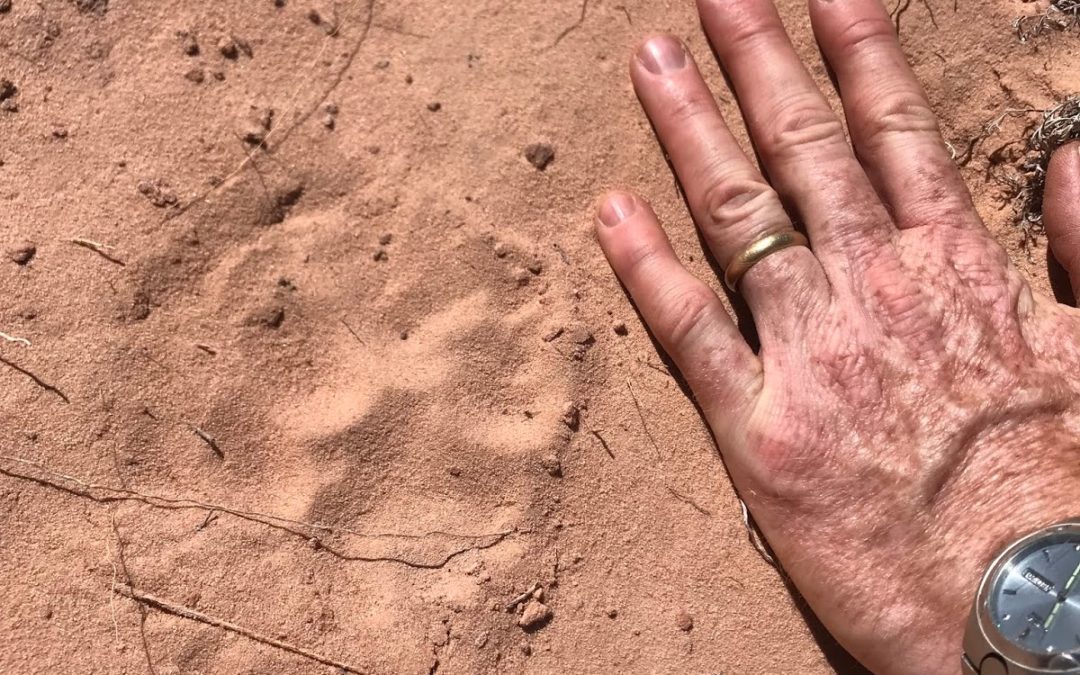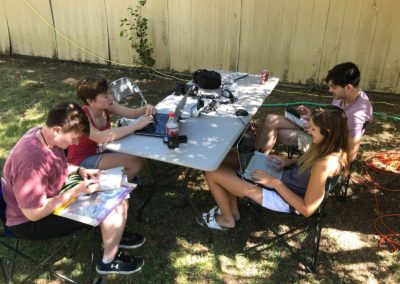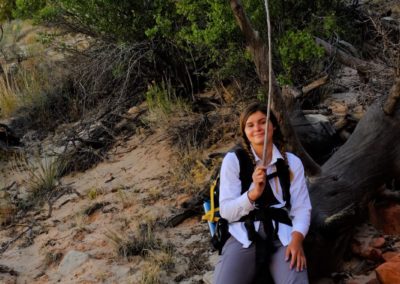Submitted by Ben Surpless (re-posted from: http://keckutah.blogspot.com/)
Day 3 started with with a mini-lesson from Ben about geologic stress and strain. Understanding these concepts are important to us, because they relate to the formation of the fractures and faults which we have been observing in the field each day. While the mathematics of these two concepts can be quite tricky, we kept our lesson simple, focusing on how stress and strain might have controlled the cardinal orientations of the fractures we’ve been measuring.
After our lesson, we returned to the field, to continue our measurements. Naturally, after several hours of fieldwork, it was time for a bathroom break; as we took turns hiking a role of toilet paper over to a secluded area, our expedition stumbled upon a set of large paw prints in the sand. After some debate, we decided that these tracks were from a mountain lion, since that area was far from the beaten path.
Soon, we put our big-cat fears aside and got back to work, spanning measuring tapes across cliffs and scaling crumbing boulders to measure fracture orientations. By the end of the work day (which is usually dependent upon how hot it is outside) the group returned to camp, promptly settling into recording and processing data. By the end of today (day 3), we have measured more than 90 fractures, spanning a linear distance of over 400 meters, all measured by hand tape. Soon, we hope to be able to start understanding the underlying processes controlling these fractures. First, though, there is a lot of data crunching to be done.
Tip of the day: “Beating Bugs” -in the field, gnats tend to congregate around the highest point on a hiker’s body. Therefore, to beat them, you can trick them into thinking you’re much taller than you actually are!




